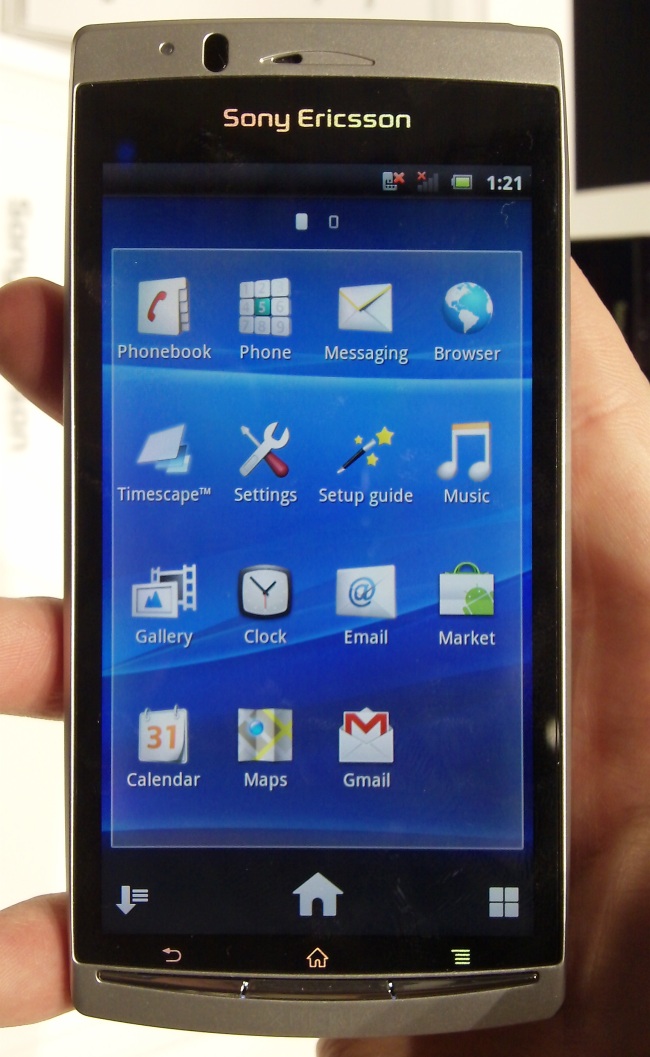
This large picture still does little justice to the screen of the Sony Ericsson Xperia Arc. Like Samsung’s Super AMOLED phone and a whole crop of new phones hoping to compete with the iPhone 4 “Retina Display,” the Xperia Arc has a bright and vibrant high-end “Reality Display.” Buzzwords aside, it is a very nice 4.2-inch, 854×480 pixel screen. It’s also scratch and shatter resistant, thanks to a form of mineral glass–a type of glass used to make watch crystals.
The phone runs Android 2.3 with Sony’s shell on top, the Bravia Engine, which dolls up the interface, making it look more like Sony’s line of TVs and the PS3 with more blues and windowpane-like menus. Every manufacturer feels compelled to add its own flavor to Android, but Sony does an especially slick job, besting Motorola’s Blur interface and maybe even HTC Sense–though Sense has far more custom widgets to choose from.
Physically, the Xperia Arc is pretty thin and has an “inhale” design where the center is actually thinner than the top and bottom. Representatives told us that, at its center, the device is thinner than the iPhone 4. Impressive, I suppose, but the plastic casing can’t match the solid feel of the iPhone 4. Nevertheless, the design fit surprisingly well in my hand. Another notable change from most Android phones is the addition of actual physical Home, Back, and Menu buttons. Representatives also made a point about the quality of the low-light pictures it takes, but we haven’t had a chance to test this feature due to the bright lights on the show floor.
Like most Sony Ericsson phones, the Xperia Arc is having a difficult time finding a carrier to support it in the United States. No pricing, carrier plans, or release dates have been announced. The most likely candidate is AT&T, but we’ll have to wait and see.
The video below shows the device in action. We also have a few more photos of the phone here.

Editors' Recommendations
- Sony’s new Xperia 1 IV comes with a crazy moving zoom lens
- The Sony Xperia Pro is the $2,500 phone videographers have been clamoring for
- Widescreen Xperia 1 II super phone is full of Sony’s camera and visual expertise
- Sony Xperia 5: Everything you need to know about Sony’s smaller flagship phone
- Sony’s Xperia 1 is the first smartphone with a 4K OLED display

